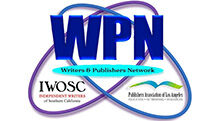 by Bobbie Christmas
by Bobbie Christmas
Q: Commas drive me crazy. I see them one way in one publication and another way in other publications. What are the rules? How am I to know where to put a comma?
A: You are not alone in your confusion. The problem is that the use of commas is a style issue, rather than a strict rule. Each publication has a specific style. Newspapers often use Associated Press style, for example, which does not use the Oxford, or serial, comma. AP style would handle commas this way, in a list: The American flag is red, white and blue. Chicago style, however, which most book publishers follow, does call for a comma before the conjunction in a series. Chicago would write the same sentence this way: the American flag is red, white, and blue. See the added comma? No wonder writers are confused. Chicago style, set forth in The Chicago Manual of Style, has a long list of when to use commas, and I won’t go into the list here. My best advice is to use an editor familiar with the style of the publication for which you write. If you are writing fiction or nonfiction books, be sure to hire an editor who follows Chicago style.
Q: Do I include or omit the commas in the following? “A big, iron, black pot was used to cook the crabs.” I couldn’t decide based on the description of coordinate adjectives in The Chicago Manual of Style, which states the following:
“A coordinate adjective is one that appears in a sequence with one or more related adjectives to modify the same noun. Coordinate adjectives should be separated by commas or by ‘and’ {skilled, experienced chess player} {nurturing and loving parent}. But if one adjective modifies the noun and another adjective modifies the idea expressed by the combination of the first adjective and the noun, the adjectives are not considered coordinate and should not be separated by a comma.
“As a general rule, when a noun is preceded by two or more adjectives that could, without affecting the meaning, be joined by ‘and,’ the adjectives are normally separated by commas. Such adjectives, which are called coordinate adjectives, can also usually be reversed in order and still make sense. If, on the other hand, the adjectives are not coordinate—that is, if one or more of the adjectives is essential to (i.e., forms a unit with) the noun being modified—no commas are used.”
A: The CMOS definition makes my head swirl. I’d much rather talk in terms of creative writing. I’ll give you an answer, although it may not be the one you expect. Quite often when we have questions about commas, we really are dealing with creative issues. For example, although commas are okay in the instance of “A big, iron, black pot was used to cook the crabs,” the sentence relies on a string of adjectives: big, iron, and black. While one adjective can be effective, each added adjective in a string weakens the writing. The sentence is also passive. In reality the color of the pot is not essential, so consider revamping the entire sentence, perhaps this way: “We used a big iron pot to cook the crabs.” Doesn’t that sentence sound more direct?
Q: I might be thinking too deeply and getting confused, but am I correct to place commas as I did in the following sentence:
You can’t go back, and if you think too much about the future, you miss the moment.
OR should it be: You can’t go back and if you think too much about the future, you miss the moment.
I’m confused because when I add all the commas, as in the first example, then “and if you think too much about the future” looks like a nonrestrictive clause, which it isn’t. Yikes!
A: Sometimes we do overthink grammar issues. The first sentence is correct:
You can’t go back, and if you think too much about the future, you miss the moment.
Here’s why the punctuation is correct. Two independent clauses joined by a conjunction should be separated by a comma. “You can’t go back” and “If you think too much about the future, you miss the moment” are independent clauses. “And” is the conjunction.
Q: I’m talking about when my hair came back years ago after chemo. In the sentence below, do I need a comma before ‘and?’ “So was I” does not seem like a full sentence. I also tried the sentence different ways. Which one, if any, do you like?
My new hair was full of vigor and so was I.
My new hair was full of life and vigor and so was I.
A: “So was I” has a subject and a verb, so it can be a standalone sentence, even though the conjunction “so” should rarely begin a sentence. Nevertheless, in both cases, because the sentences are compound, a comma should be placed before “and.”
My new hair was full of vigor, and so was I.
My new hair was full of life and vigor, and so was I.
As for the two sentences, both will be correct, once a comma precedes “and.” Only you can decide which sentence gives the message you want to set forth.
Q: Is a comma okay after “inside?”
Inquisitively, I tore it open; inside, was a gold coin.
I’d like to keep it as one sentence, as shown above, instead of two distinct sentences.
A: The semicolon is fine, but the comma after “inside” is not appropriate. Correct:
Inquisitively, I tore it open; inside was a gold coin.
For much more information on commas and hundreds of other subjects of vital importance to writers, order Purge Your Prose of Problems, a Book Doctor’s Desk Reference Book.
Send your questions to Bobbie@zebraeditor.com. Bobbie Christmas, book editor, owner of Zebra Communications, and five-time-award-winning author of Write In Style: How to Use Your Computer to Improve Your Writing, will answer your questions quickly. Read more Ask the Book Doctor questions and answers at www.zebraeditor.com.
